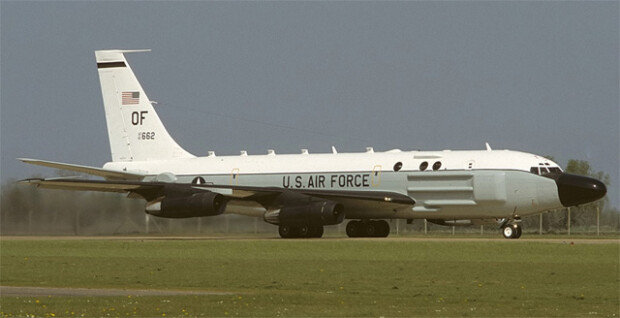U.S. deploys two reconnaissance aircrafts to monitor N. Korea
U.S. deploys two reconnaissance aircrafts to monitor N. Korea
Posted December. 07, 2019 07:30,
Updated December. 07, 2019 07:30

New activity spotted at the Sohae Satellite Launching Station in Tongchang-ri, North Korea is likely to cause quite a stir since North Korea has intensified the war of nerves with the United States in recent months. It is considered a warning for more serious provocation, namely the launch of intercontinental ballistic missiles (ICBM). After developing liquid-propellant engine called “Baekdu engine” at the facility between 2016 and 2017, North Korea mounted it on its ICBM, such as the Hwasong-14 and Hwasong-15. That is why the new activity in Tongchang-ri is considered an ominous development.
As if it were reflecting the situation in Tongchang-ri, U.S. reconnaissance aircraft RC-135V Rivet Joint, which collects data on military provocations by North Korea, flew over Seoul Friday afternoon to conduct reconnaissance. Earlier on Friday morning, another U.S. reconnaissance aircraft RC-135S Cobra Ball left the Japanese islands and flew over the East Sea, in an apparent move to practically besiege North Korea so that it cannot undertake additional provocations. North Korea is reportedly building slaps of concrete necessary for launching missiles from transporter erector launchers (TEL). Tensions between the U.S. and North Korea are reaching new heights ahead of Pyongyang’s end-of-year deadline for nuclear negotiations.
A South Korean Defense Ministry official said on Friday that the development at the Tongchang-ri site is the most serious one in recent months, adding the military is paying a close attention to the facility in preparation for a renewed activity, like engine tests. The military is raising the possibility of an additional engine test as early as the year-end as part of the North’s ICBM provocation. Experts are noting the possibility that the North might have developed an ICBM with longer range with the help of a liquid propellant engine more advanced than the Hwasong-15 it previously developed at the Tongchang-ri test site. Dr. Jeffry Lewis, director of the East Asia Nonproliferation Program at the Middlebury Institute of International Studies, said the presence of a large shipping container at the Sohae site suggests that North Korea is moving towards the launch of more threatening weapons.
lightee@donga.com · hjson@donga.com







